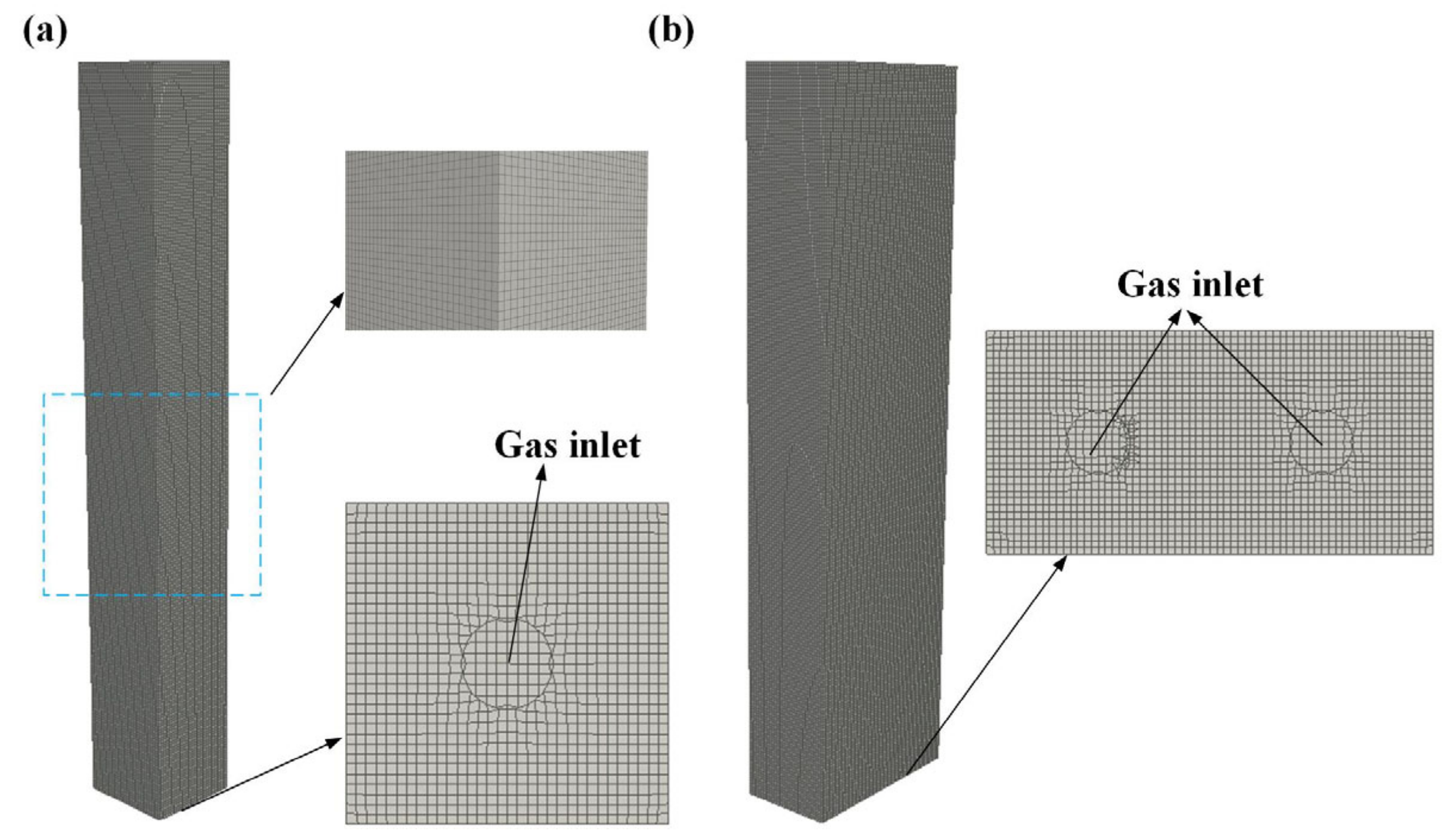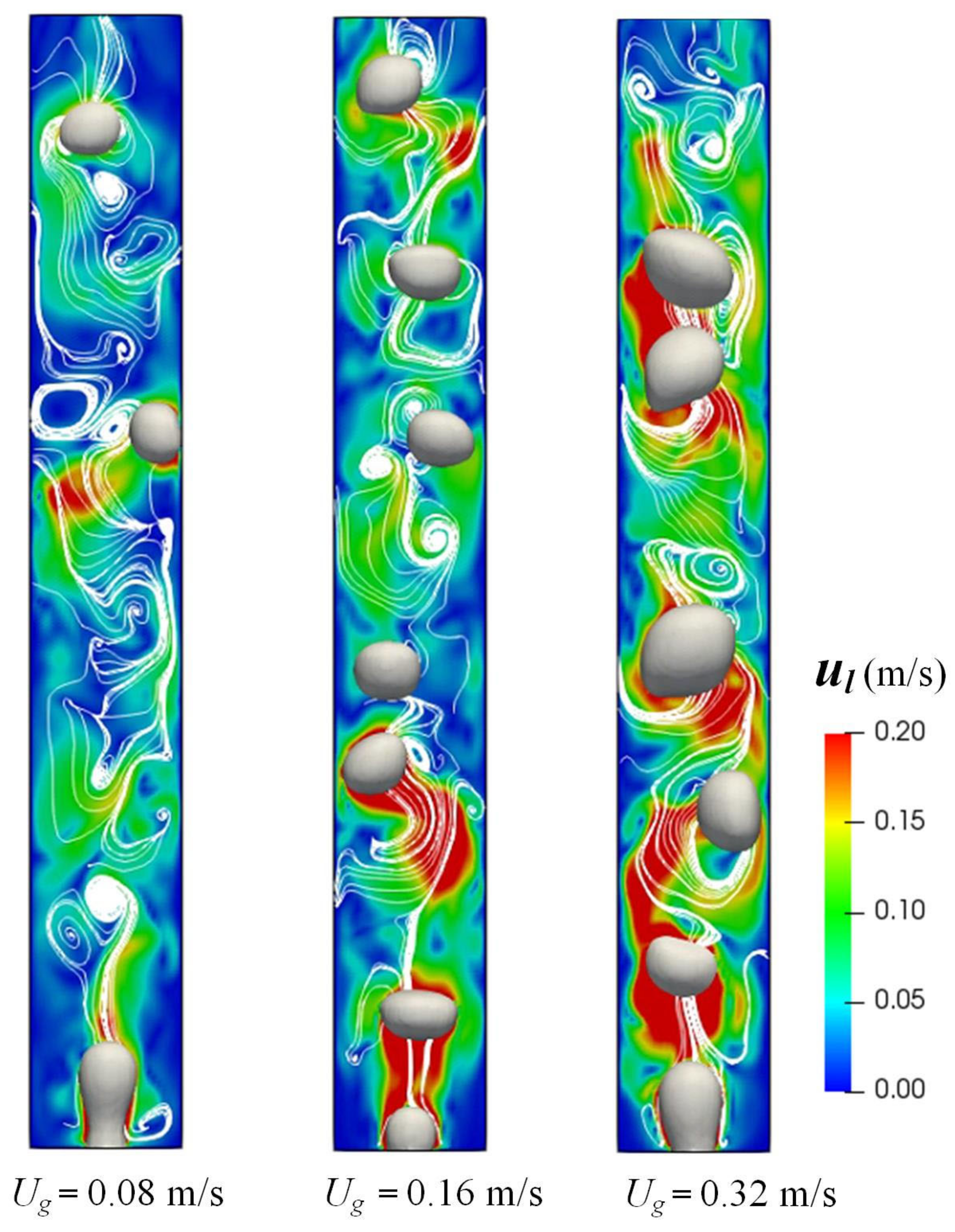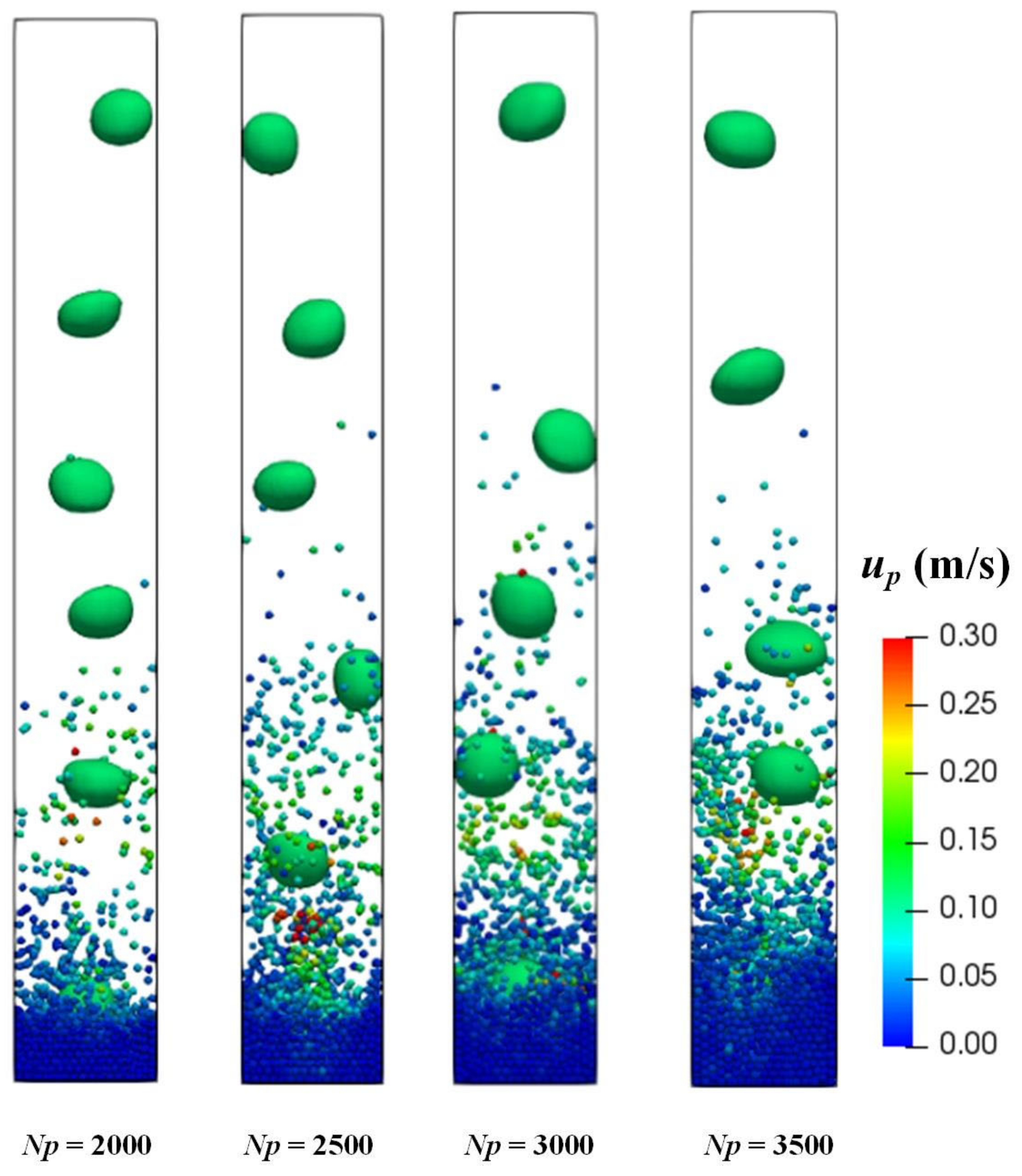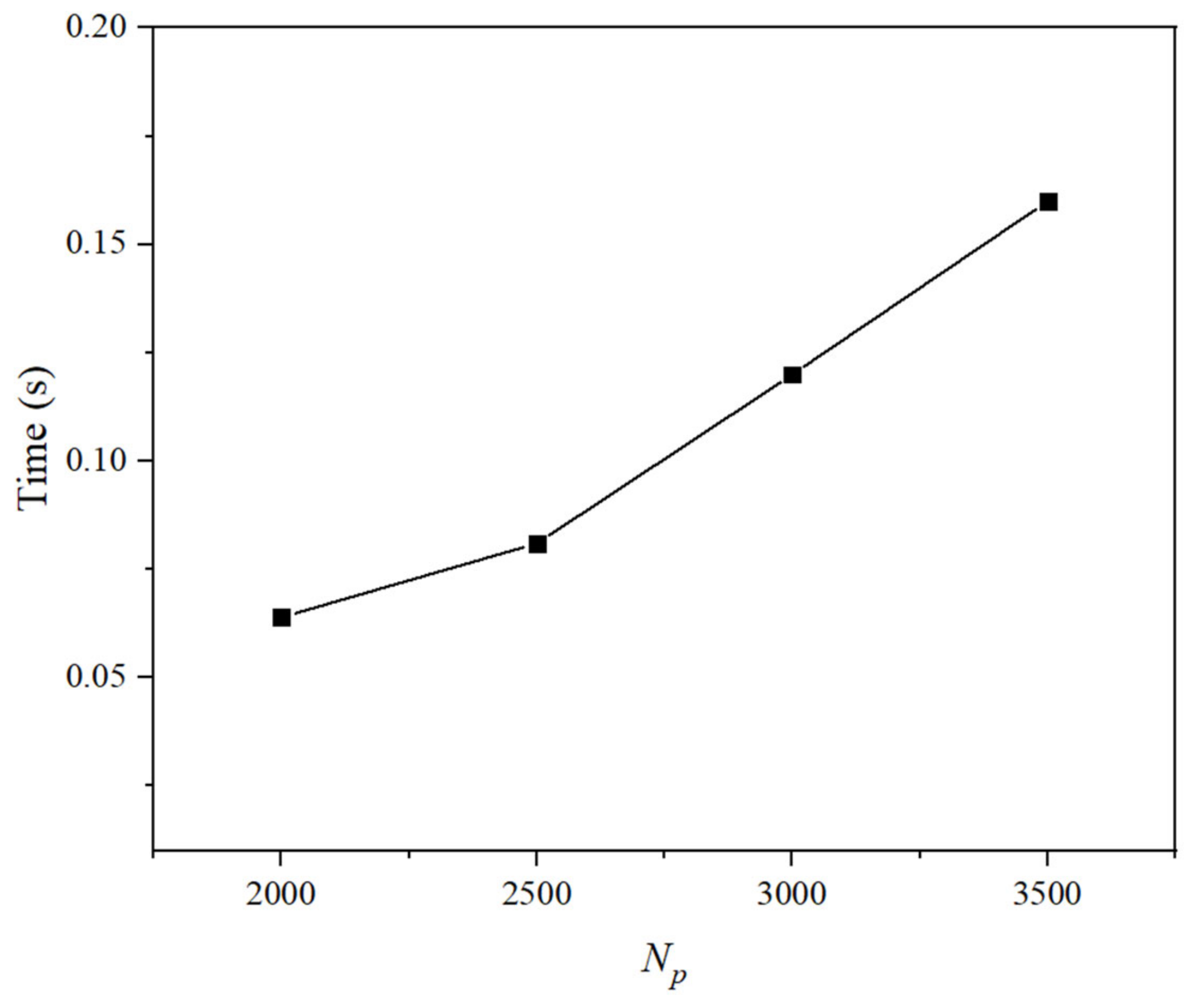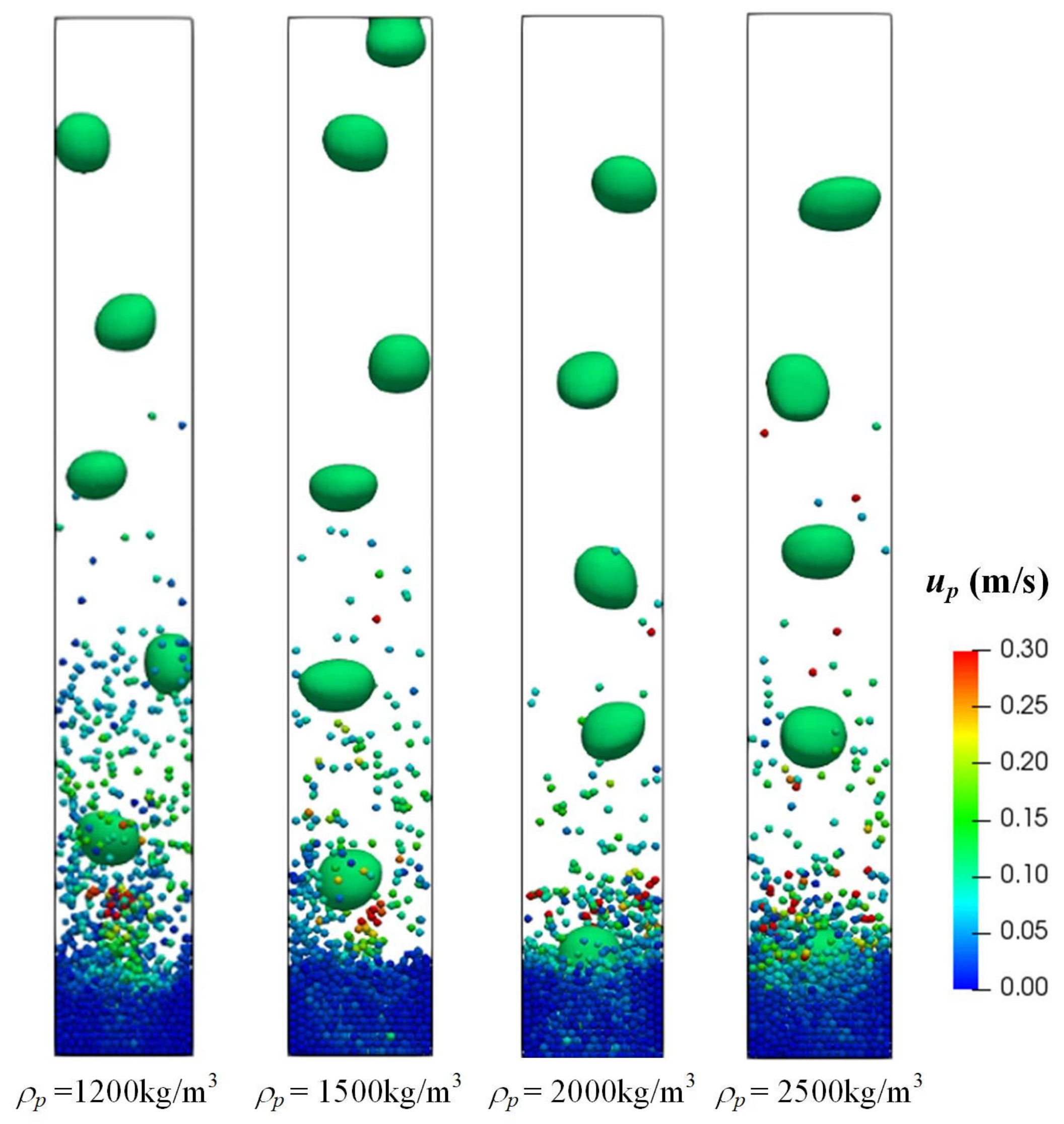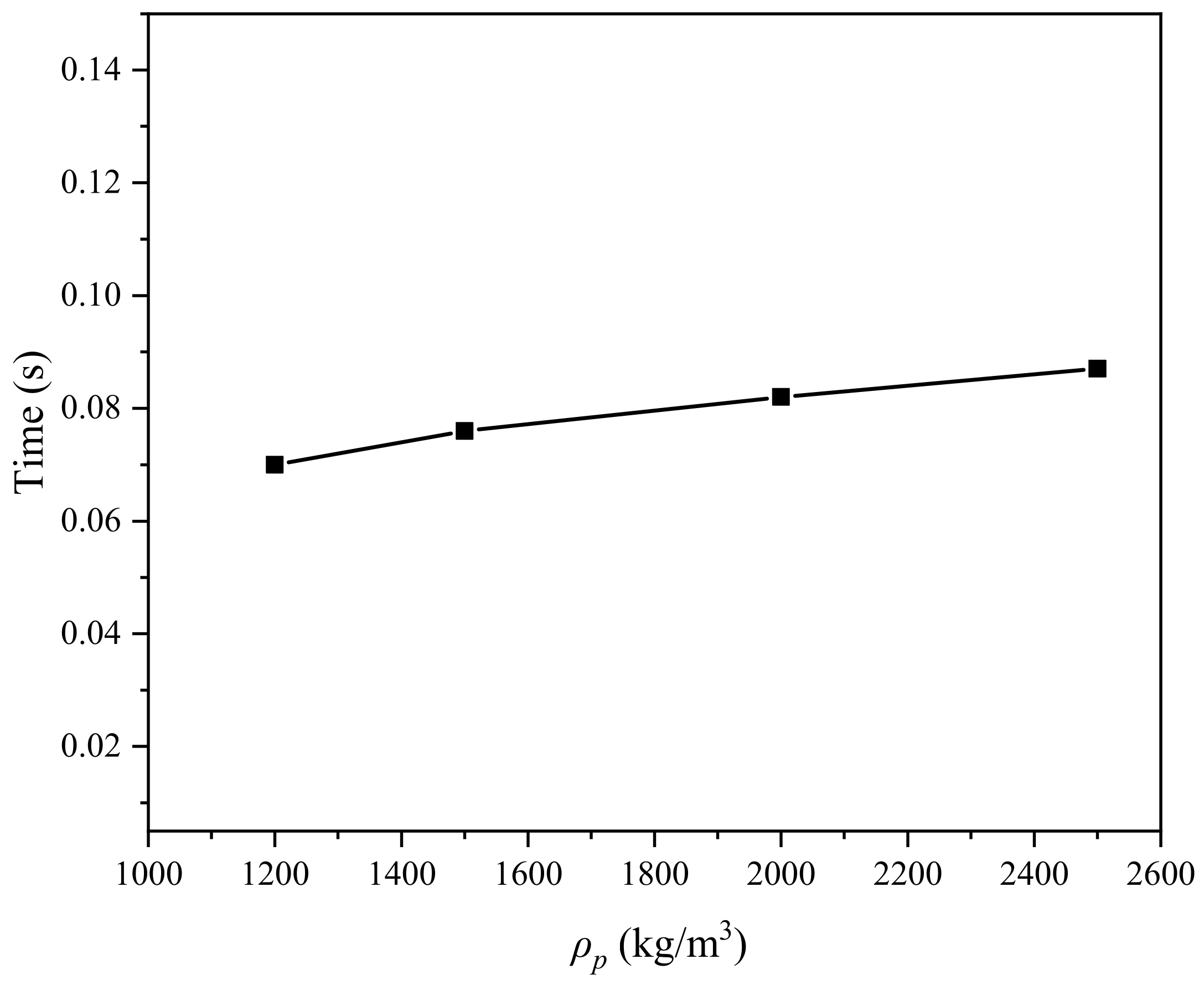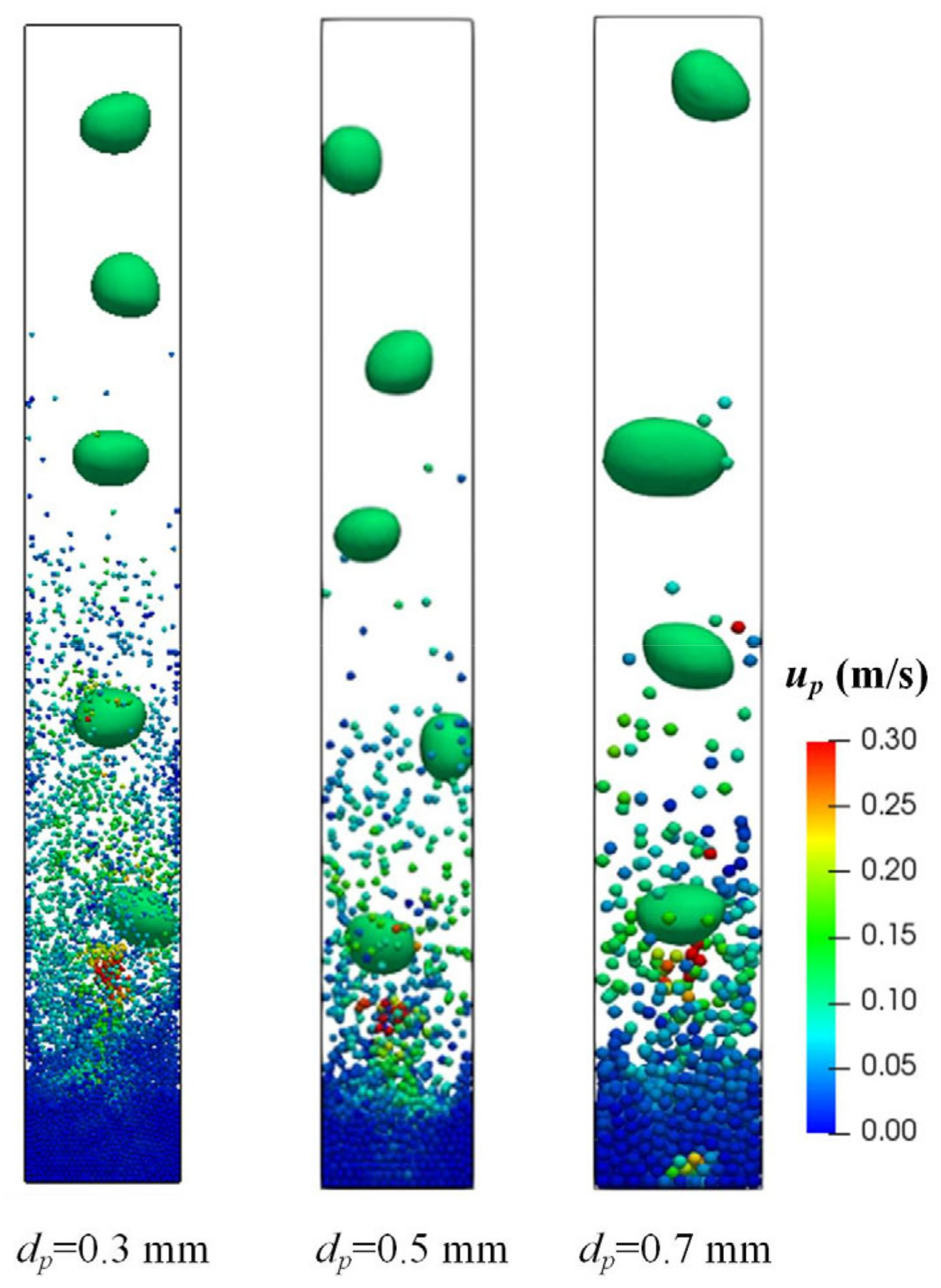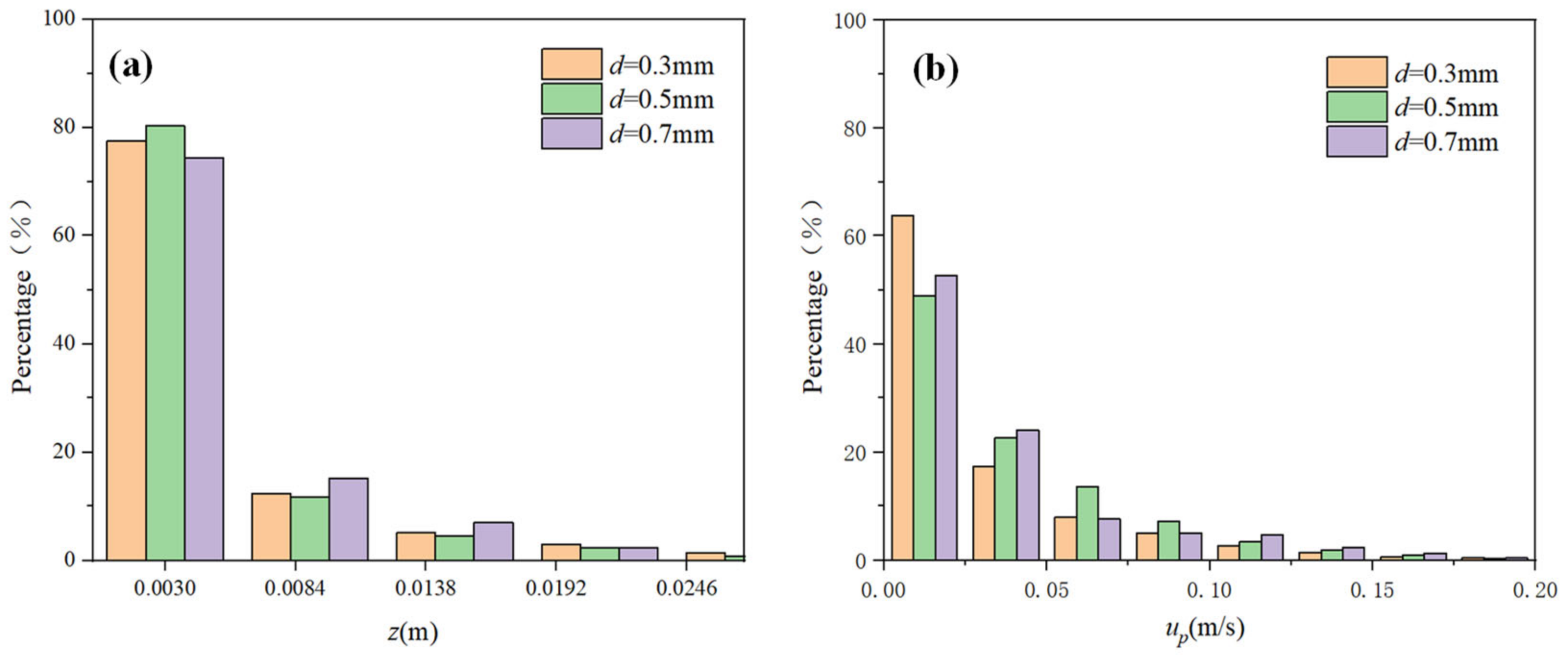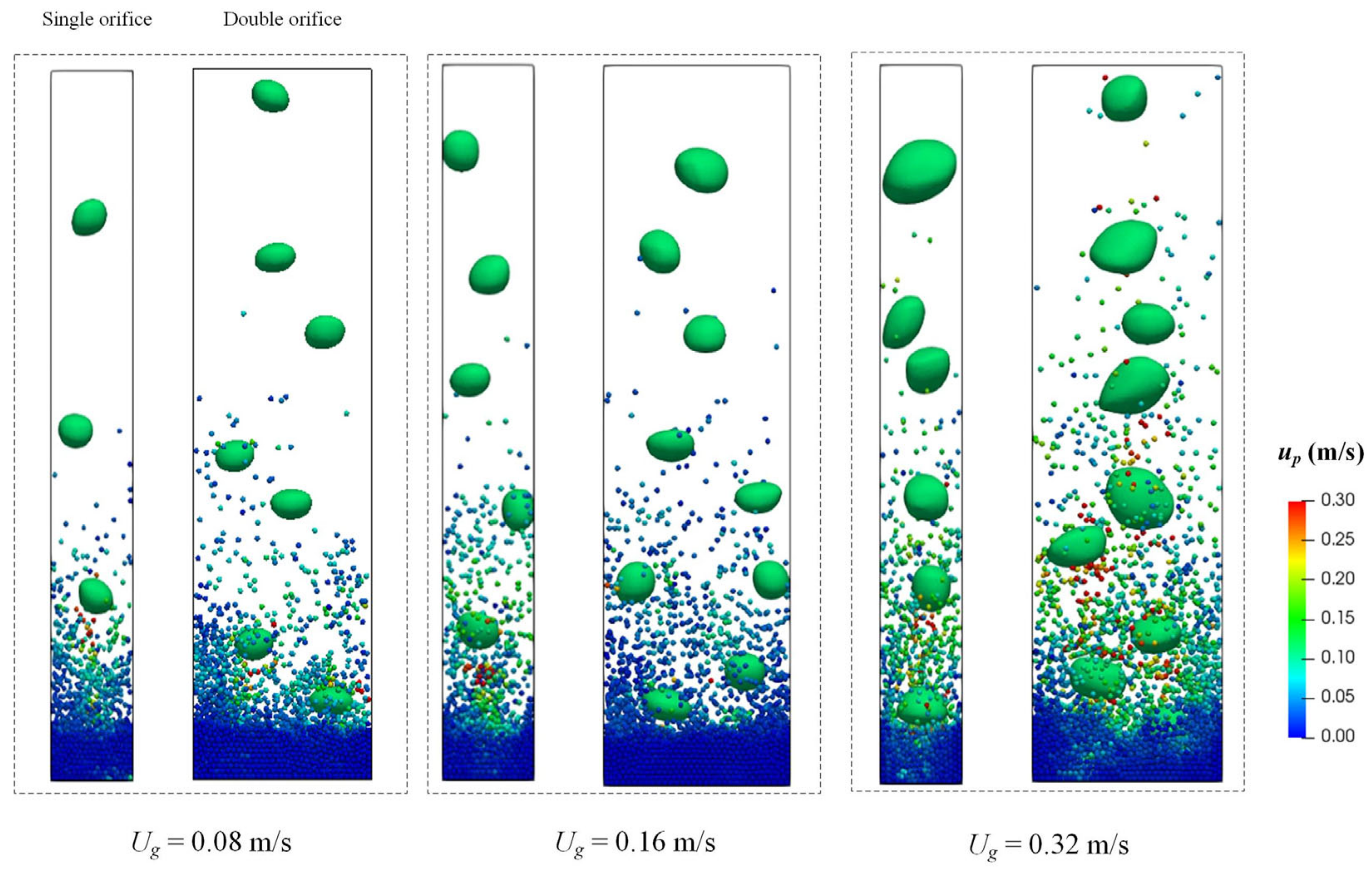Author Contributions
Conceptualization, Y.L.; methodology, L.L.; validation, M.Z.; investigation, L.L. and R.W.; writing—original draft preparation, L.L. and M.Z.; writing—review and editing, Y.L.; supervision, Y.L.; project administration, Y.L.; funding acquisition, Y.L. All authors have read and agreed to the published version of the manuscript.
Figure 1.
Schematic of the experimental setup.
Figure 1.
Schematic of the experimental setup.
Figure 2.
The computational domains. (a) The domain with a single orifice, (b) The domain with two orifices.
Figure 2.
The computational domains. (a) The domain with a single orifice, (b) The domain with two orifices.
Figure 3.
The computational meshes. (a) The mesh of the domain with a single orifice, (b) The mesh of the domain with two orifices.
Figure 3.
The computational meshes. (a) The mesh of the domain with a single orifice, (b) The mesh of the domain with two orifices.
Figure 4.
(a) Comparison of experimental and simulated bubble rising velocity at different gas inlet velocities; (b) simulated and experimental snapshots of bubbles and particles (ρp = 1200 kg/m3, Np = 2500, dp = 0.5 mm).
Figure 4.
(a) Comparison of experimental and simulated bubble rising velocity at different gas inlet velocities; (b) simulated and experimental snapshots of bubbles and particles (ρp = 1200 kg/m3, Np = 2500, dp = 0.5 mm).
Figure 5.
Snapshots of the bubbles and particles at the gas inlet velocity of 0.32 m/s at different times (ρp = 1200 kg/m3, Np = 2500, dp = 0.5 mm).
Figure 5.
Snapshots of the bubbles and particles at the gas inlet velocity of 0.32 m/s at different times (ρp = 1200 kg/m3, Np = 2500, dp = 0.5 mm).
Figure 6.
The histograms of the (a) particle positions and (b) particle velocities (ρp = 1200 kg/m3, Np = 2500, dp = 0.5 mm).
Figure 6.
The histograms of the (a) particle positions and (b) particle velocities (ρp = 1200 kg/m3, Np = 2500, dp = 0.5 mm).
Figure 7.
The liquid streamlines and liquid velocity fields at t = 1 s.
Figure 7.
The liquid streamlines and liquid velocity fields at t = 1 s.
Figure 8.
Snapshots of bubbles and particles in beds with different particle numbers (ρp = 1200 kg/m3, Ug = 0.16 m/s, dp = 0.5 mm).
Figure 8.
Snapshots of bubbles and particles in beds with different particle numbers (ρp = 1200 kg/m3, Ug = 0.16 m/s, dp = 0.5 mm).
Figure 9.
Time required for bubbles to pass through particle beds with different particle numbers.
Figure 9.
Time required for bubbles to pass through particle beds with different particle numbers.
Figure 10.
The histograms of the (a) particle positions and (b) particle velocities (ρp = 1200 kg/m3, Ug = 0.16 m/s, dp = 0.5 mm).
Figure 10.
The histograms of the (a) particle positions and (b) particle velocities (ρp = 1200 kg/m3, Ug = 0.16 m/s, dp = 0.5 mm).
Figure 11.
Snapshots of bubbles and particles influenced by different particle densities (Np = 2500, Ug = 0.16 m/s, dp = 0.5 mm).
Figure 11.
Snapshots of bubbles and particles influenced by different particle densities (Np = 2500, Ug = 0.16 m/s, dp = 0.5 mm).
Figure 12.
Time required for bubbles to pass through particle beds with different particle densities.
Figure 12.
Time required for bubbles to pass through particle beds with different particle densities.
Figure 13.
The histograms of the (a) particle positions and (b) particle velocities (Np = 2500, Ug = 0.16 m/s, dp = 0.5 mm).
Figure 13.
The histograms of the (a) particle positions and (b) particle velocities (Np = 2500, Ug = 0.16 m/s, dp = 0.5 mm).
Figure 14.
Snapshots of bubbles and particles influenced by different particle sizes (ρp = 1200 kg/m3, Ug = 0.16 m/s).
Figure 14.
Snapshots of bubbles and particles influenced by different particle sizes (ρp = 1200 kg/m3, Ug = 0.16 m/s).
Figure 15.
The histograms of the (a) particle positions and (b) particle velocities.
Figure 15.
The histograms of the (a) particle positions and (b) particle velocities.
Figure 16.
Snapshots of bubbles and particles in beds with different particle diameters at different times.
Figure 16.
Snapshots of bubbles and particles in beds with different particle diameters at different times.
Figure 17.
Snapshots of bubbles and particles in beds with single and two orifices for generation of bubbles.
Figure 17.
Snapshots of bubbles and particles in beds with single and two orifices for generation of bubbles.
Figure 18.
The histograms of the particle positions and particle velocities in beds with a single and two orifices for the generation of bubbles.
Figure 18.
The histograms of the particle positions and particle velocities in beds with a single and two orifices for the generation of bubbles.
Table 1.
The numerical schemes used in the simulations.
Table 1.
The numerical schemes used in the simulations.
| Term | Numerical Scheme |
|---|
| Euler |
| Gauss linear |
| Gauss linear Upwind grad (U) |
| Gauss vanLeer |
| Gauss linear |
| Gauss linear corrected |
Table 2.
The simulation parameters.
Table 2.
The simulation parameters.
| Parameter | Value |
|---|
| Particle diameter (mm) | 0.3, 0.5, 0.7 |
| Particle density (kg/m3) | 1200, 1500, 2000, 2500 |
| Particle number | 2000, 2500, 3000, 3500 |
| Particle–particle normal stiffness (N/m) | 100 |
| Particle–particle tangential stiffness (N/m) | 100 |
| Restitution coefficient | 0.9 |
| Friction coefficient | 0.3 |
| DEM time step (s) | 1 × 10−6 |
| CFD time step (s) | 5 × 10−5 |
| Coupling interval | 100 |
Table 3.
The simulated and experimental results of the bubble number and bubble diameter.
Table 3.
The simulated and experimental results of the bubble number and bubble diameter.
| Ug (m/s) | Nbubble (exp.) | dbubble (exp.) | Nbubble (sim.) | dbubble (sim.) |
|---|
| 0.08 | 3 | 4.19 mm | 3 | 3.56 mm |
| 0.16 | 5 | 4.95 mm | 6 | 4.44 mm |
| 0.32 | 6 | 5.71 mm | 6 | 5.12 mm |
Table 4.
The effect of the particle number on the bubble number and diameter.
Table 4.
The effect of the particle number on the bubble number and diameter.
| Particle Number | Nbubble | dbubble |
|---|
| 2000 | 6 | 4.15 |
| 2500 | 6 | 4.12 |
| 3000 | 5 | 4.54 |
| 3500 | 5 | 4.51 |
Table 5.
The effect of the particle density on the bubble number and diameter.
Table 5.
The effect of the particle density on the bubble number and diameter.
| Particle Density (kg/m3) | Nbubble | dbubble |
|---|
| 1200 | 6 | 3.52 |
| 1500 | 6 | 3.48 |
| 2000 | 5 | 3.55 |
| 2500 | 5 | 3.61 |
Table 6.
The effect of the particle diameter on the bubble number and diameter.
Table 6.
The effect of the particle diameter on the bubble number and diameter.
| Particle Diameter (mm) | Nbubble | dbubble |
|---|
| 0.3 | 6 | 4.05 |
| 0.5 | 6 | 4.10 |
| 0.7 | 4 | 5.30 |


